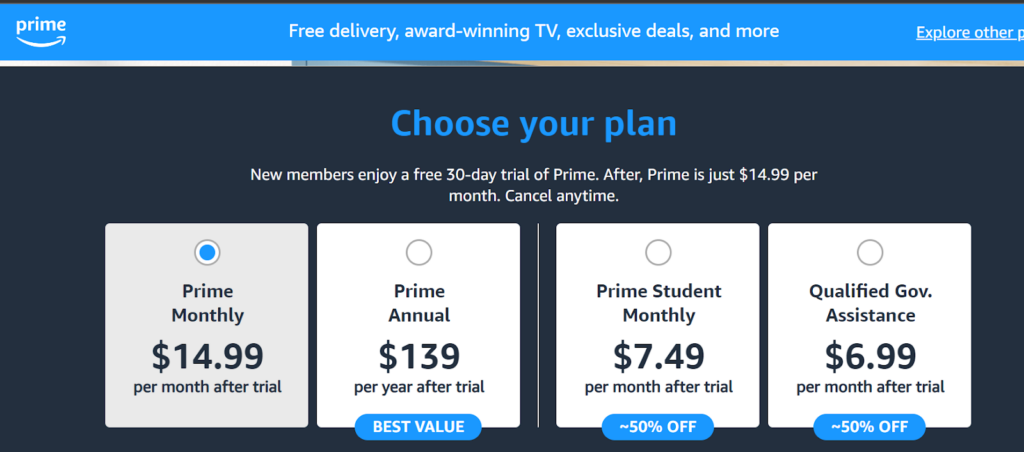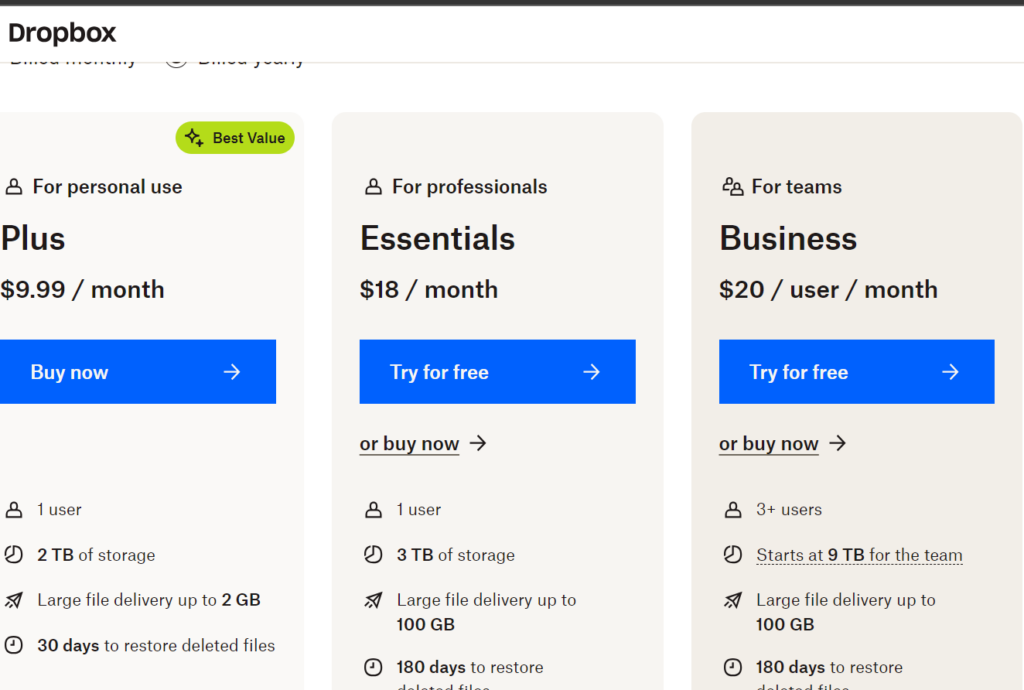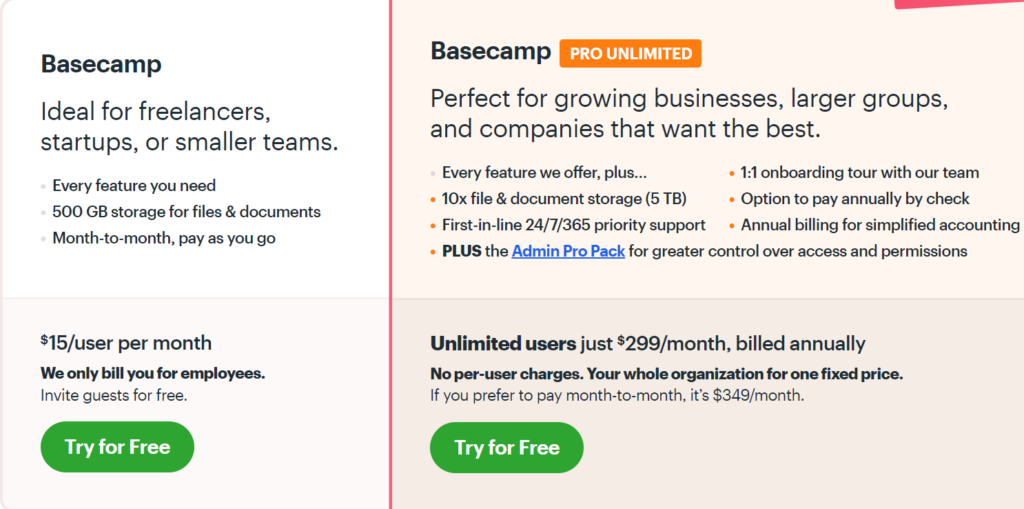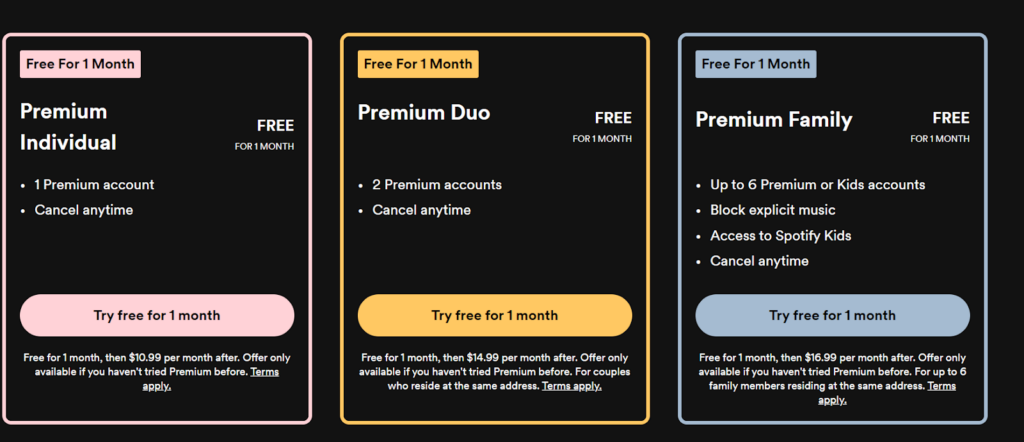What is SaaS Pricing?
SaaS pricing refers to the strategies and models Software providers use to charge consumers for access to their software applications.
Setting your product prices depends on a couple of factors, like your product’s uniqueness, your intended market, and your business size. Additionally, every model has its benefits and drawbacks. As a result, you must perform thorough research before settling on one.
The great thing about pricing models, however, is that they are not set in stone. If a model is not working for you, you can always take a step back, reassess, and employ a different strategy.
Pricing models are designed to provide flexibility and scalability, enabling businesses of all sizes to select the plan that best meets their requirements.
Types of Pricing Models in SaaS
1. Penetration Pricing
Penetration pricing is used by businesses to attract customers to a new product or service by offering lower prices during its initial launch.
A discounted rate allows a new product or service to enter the market and lure customers away from competitors.
Amazon used a penetration pricing approach when it launched its Prime Video service to compete with established rivals like Netflix and Hulu.

Amazon Prime Video was made a part of the larger Amazon Prime subscription, including privileges such as free delivery on Amazon purchases, access to music streaming, and more. Although the overall value of these services was substantial, Amazon Prime was maintained competitively low.
As a result, the company quickly became a key player in the streaming service business, gaining an edge in a competitive market and attracting a significant user base.
Penetration pricing is typically employed when demand for a new product or service is expected to be high. The aim is that the sales volume will compensate for the lower-than-average cost.
| Pros | Cons |
|---|---|
| Rapid user adoption. | Perceived product low quality. |
| Word of mouth and viral potential. | Strain on financial resources. |
| Builds customer base | Can attract price-driven customers. |
2. Usage-Based Pricing
In usage-based pricing, customers are charged depending on how much they use a service or product rather than a set cost.
Pricing is based on quantifiable usage, such as storage space, database size, messages, and so on. An example of a business that utilizes this model is Dropbox.

Usage-based pricing lets consumers use a product at a low cost. This decreased barrier to entry attracts more consumers and allows users to increase their consumption rapidly.
It also gives an impression of a relatively cheap fee as usage determines the charges, and consumers have control over how much they use the software.
This decreased barrier to entry, in turn, attracts more consumers and allows a subset of users to increase their consumption rapidly.
Systems in usage-based pricing usually provide a metric system that enables users to measure their usage level.
| Pros | Cons |
|---|---|
| Customers can start small and increase their usage. | Costs can be unpredictable. |
| Users only pay for what they use. | Understanding the pricing structure can be complex. |
| Supports businesses of all sizes. | Concerns over cost can deter users from fully exploring and utilizing the service. |
| Users can see how their usage affects costs, building trust. |
3. Tiered Pricing
Tiered pricing entails creating a number of different packages or “tiers” with varying features, usage limits, and price points.
Customers can choose the tier that best suits their needs and budget, giving them flexibility and options.
This model is advantageous for SaaS companies because it caters to a diverse range of customers, from small startups to large enterprises.
HubSpot is an excellent example of a SaaS company that uses tiered pricing to serve a wide range of customers.
A typical tiered pricing structure includes:
- Basic Tier: Limited features and a lower price point.
- Standard Tier: More features at a reasonable price.
- Premium Tier: All features at the highest price point.
The goal of tier pricing is to provide enough variation in each tier to appeal to different groups of your target market.
| Pros | Cons |
|---|---|
| You can tailor offerings to different market segments. | Customers might find it overwhelming to choose from multiple tiers. |
| Increased revenue potential. | Risk of underpricing or overpricing. |
| Customers can scale up or down based on their changing needs. | Difficulty in pricing optimization. |
4. Flat Rate Pricing
Flat rate pricing is a pricing method in which a SaaS provider charges a single, fixed amount for software access. The fee covers all of the software’s benefits and features, regardless of usage level or number of users.
Customers know exactly what they are paying for in advance, while you provide simplicity and predictability.
With flat-rate pricing, you can budget for software costs without having to worry about fluctuations that result from changes in customer usage. An example of a business employing flat-rate pricing is Basecamp.

Basecamp offers a flat-rate pricing model where customers pay $99 per month regardless of the size of their teams or the number of projects they manage.
The simplicity of the pricing model makes it simple for prospective customers to comprehend the price and ensures that both small businesses and large teams will find value in the product.
| Pros | Cons |
|---|---|
| Straightforward and easy to understand. | Limited appeal to a diverse customer base. |
| Consistent revenue. | Potential of underpricing or overpricing. |
| Provides for easy marketing. | Lack of upsell opportunities. |
5. Freemium Pricing
The Freemium model gives users some basic services for free, but you have to pay to access the extra fancy features. This model is a clever way to get more people to use the software and show them its value.
The software industry is a competitive landscape, and offering freemium pricing can be your foot in the door. By providing a free version of your service, you make sure that cost doesn’t prevent people from using it.
Spotify is a great example of how to do Freemium Pricing well. You can stream a huge music collection for free, supported by ads. However, for an ad-free experience, offline listening, and better audio quality, you must go for Spotify Premium.

When people can start on your product for free, more and more people will want to join. Having more users means having more data and feedback from users, which can help make your service better and more refined.
Additionally, freemium is not only about the free users, it is also a way to show off premium features and convince users to upgrade to paid plans.
| Pros | Cons |
|---|---|
| Rapid user acquisition. | Supporting a large number of free users can put a strain on the company’s resources. |
| Low barrier to entry for users. | Converting free users to paying customers can be challenging. |
| Satisfied free users are likely to recommend the product to others. | Free users might have high expectations for support and features. |
| Opportunity for data collection on user behavior and preferences. |
MORE: Price positioning
6. Competitor-based pricing
Competitor-based pricing lets businesses set prices for products based on what their competitors are charging.
Instead of solely looking at production costs or customers’ perceptions, this approach focuses on what’s happening in the market. It makes sure your prices are similar to what other companies are charging.
Even a small change in a competitor’s prices can affect the whole market, causing businesses to review and change their own pricing strategies.
It’s like playing chess, where you must keep an eye on what your opponents are doing and be ready to change your plan.
A good example of competitor-based pricing is evident in the graphic design software industry, particularly between Adobe Creative Cloud and CorelDRAW.
Adobe provides a broad set of capabilities via a subscription-based strategy. Their pricing mirrors industry standards, striking a balance between premium features and market competitiveness.
As a competition, CorelDRAW used competitor-based pricing to position itself in the market. They provided comparable graphic design skills at a lower cost, thus appealing to consumers who considered Adobe’s suite overly costly.
| Pros | Cons |
|---|---|
| Ensures pricing is competitive and in line with industry norms. | Prioritizes competitor actions over customer value. |
| Simpler to adopt compared to other pricing models. | May lead to harmful pricing battles. |
| Facilitates swift responses to market shifts. | Prices might not adequately cover operational costs. |
How to Select the Right Pricing Model for Your SaaS Business
Choosing the best pricing plan is critical for any SaaS company. It’s not only about paying expenditures, it’s also about maximizing value for your company and its customers.
First and foremost, identify your target audience.
- Who exactly are they?
- What are their financial constraints?
- What benefit does your product give them?
You can customize a price plan that meets their expectations and corresponds with the perceived worth of your product by answering these questions.
Here are some considerations to ponder when deciding on a pricing model:
- Market Analysis: Research your competitors. How are their products priced? While you should not duplicate their techniques, knowing them might bring significant insights.
- Product Usage Evaluation: Does your product’s usage vary considerably amongst customers? If this is the case, a usage-based or tiered pricing approach may be more appropriate.
- Balancing Simplicity and Flexibility: Customers should be able to comprehend your pricing plan if it is simple and flexible. A complex price system may turn off potential customers.
- Scalability: Ensure that your pricing plan can support expansion, both for your company and for your consumers.
- Leveraging Psychological Pricing: How you offer your pricing can have a significant influence on how they are viewed. You can make your prices more appealing by employing tactics such as bundling.
- Offering Flexibility: Offering several payment options, such as monthly or annual plans, will help your product reach a wider audience.
Choosing the best pricing plan for your SaaS business is challenging but essential.
By considering the factors listed above, you can develop a plan that optimizes value for both your customers and your business.
Remember, the goal is to find a win-win situation where your clients believe they are receiving good value and the company thrives.
MORE: Software buying process
Key Takeaways
Understanding the various SaaS pricing structures is important for both service providers and customers.
From the simplicity of flat-rate pricing to the flexibility of usage-based models, each method has its own set of advantages and disadvantages.
To develop trust with consumers, you must carefully pick a pricing plan that corresponds with your product’s value proposition, market conditions, and long-term company goals while also assuring transparency and fairness.
For more information on SaaS pricing and pricing strategies, visit our SaaSGenius pricing site.
Author
Methodology
- Who?
We are SaaS experts: Our specialists constantly seek the most relevant information to help support your SaaS business. - Why?
We are passionate about users accessing fair SaaS pricing: We offer up-to-date pricing data, reviews, new tools, blogs and research to help you make informed SaaS pricing decisions. - How?
With accurate information: Our website manager tests each software to add a Genius Score using our rating methodology to each product. Our editorial team fact-check every piece of content we publish, and we use first-hand testing, value metrics and leading market data.
